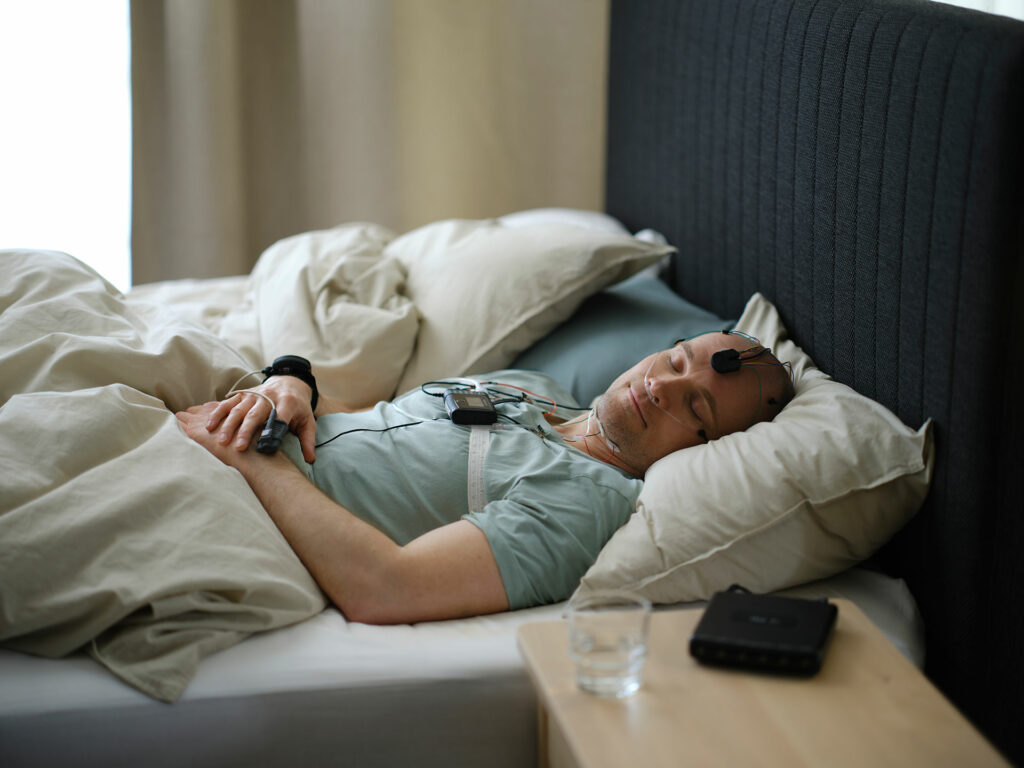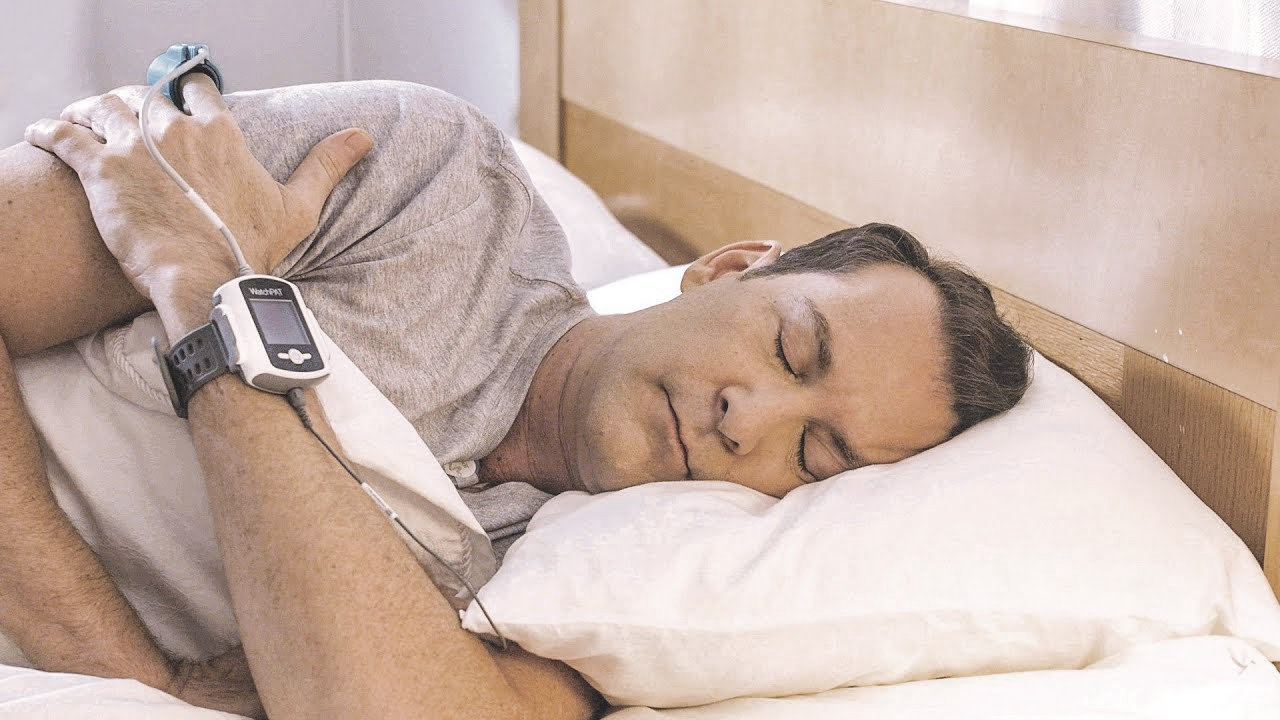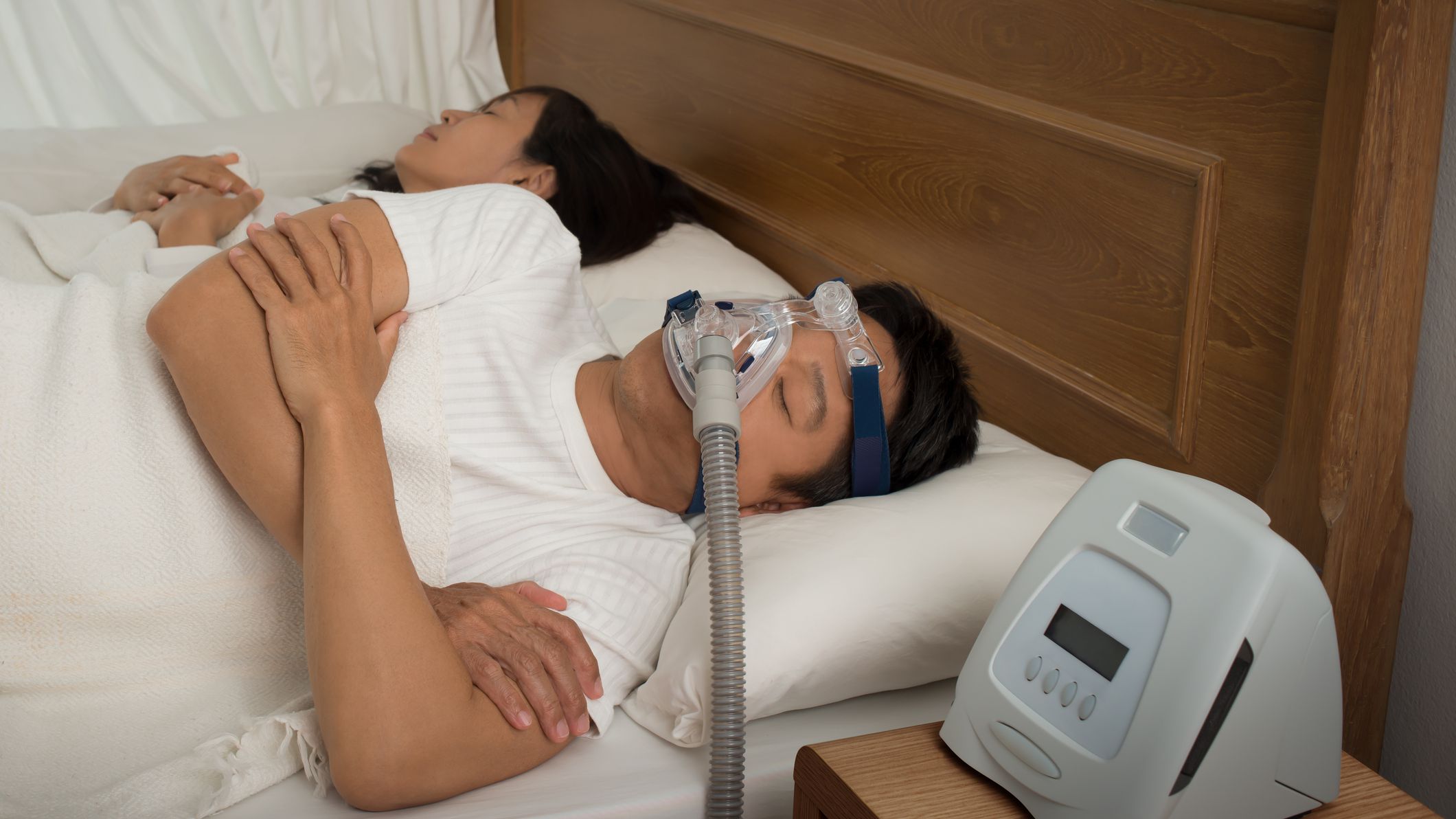Category: CPAP Masks
Sleep Study Ipswich: Analysing Sleep Patterns in Queensland
Sleep is a fundamental aspect of our daily lives, yet it is often overlooked and undervalued. In recent years, sleep disorders have been on the rise, leading to a growing concern for public health. To shed light on this issue, a comprehensive sleep study was conducted in Ipswich, Queensland. The study aimed to analyze sleep patterns in the region and provide valuable insights into the importance of sleep and its impact on health.
Understanding the Importance of Sleep
Before delving into the details of the sleep study in Ipswich, it is essential to grasp the significance of sleep itself. Sleep is not merely a state of rest; it is a complex physiological process that allows our bodies to rejuvenate and restore. During sleep, our brain consolidates memories, repairs tissues, and regulates essential bodily functions. Without adequate sleep, our cognitive abilities, immune system, and overall well-being are compromised.
With the aim of gathering data on sleep study ipswich in Queensland, the sleep study in Ipswich followed a systematic methodology.
The Science Behind Sleep
Scientists have been intrigued by the science behind sleep for centuries. Through extensive research, they have discovered that sleep is regulated by two main processes: the sleep-wake homeostasis and the circadian rhythm. The sleep-wake homeostasis ensures that we have a sufficient need for sleep based on our awake time, while the circadian rhythm coordinates our sleep-wake cycles with the natural light-dark cycles of the day.
Sleep and Health: A Direct Connection
Studies have consistently shown a direct connection between sleep and overall health. Lack of sleep has been associated with a wide range of health problems, including cardiovascular diseases, obesity, diabetes, and mental health disorders. Furthermore, chronic sleep deprivation can impair cognitive function, decrease productivity, and increase the risk of accidents. Understanding this connection is crucial for developing effective strategies to improve sleep health.
One fascinating aspect of sleep is the role it plays in memory consolidation. During sleep, the brain processes and stores information gathered throughout the day, strengthening neural connections and enhancing our ability to recall and retain information. This process, known as memory consolidation, is vital for learning and academic performance. It is no wonder that students who prioritize sleep often perform better in exams and have improved cognitive abilities. Learn more about cognitive abilities visit at https://www.brookings.edu/wp-content/uploads/2016/06/05education_dickens.pdf.
Additionally, sleep is closely linked to our emotional well-being. A good night’s sleep can help regulate our emotions and improve our mood, while sleep deprivation can lead to irritability, mood swings, and even depression. This connection between sleep and emotions highlights the importance of prioritizing quality sleep to maintain optimal mental health.
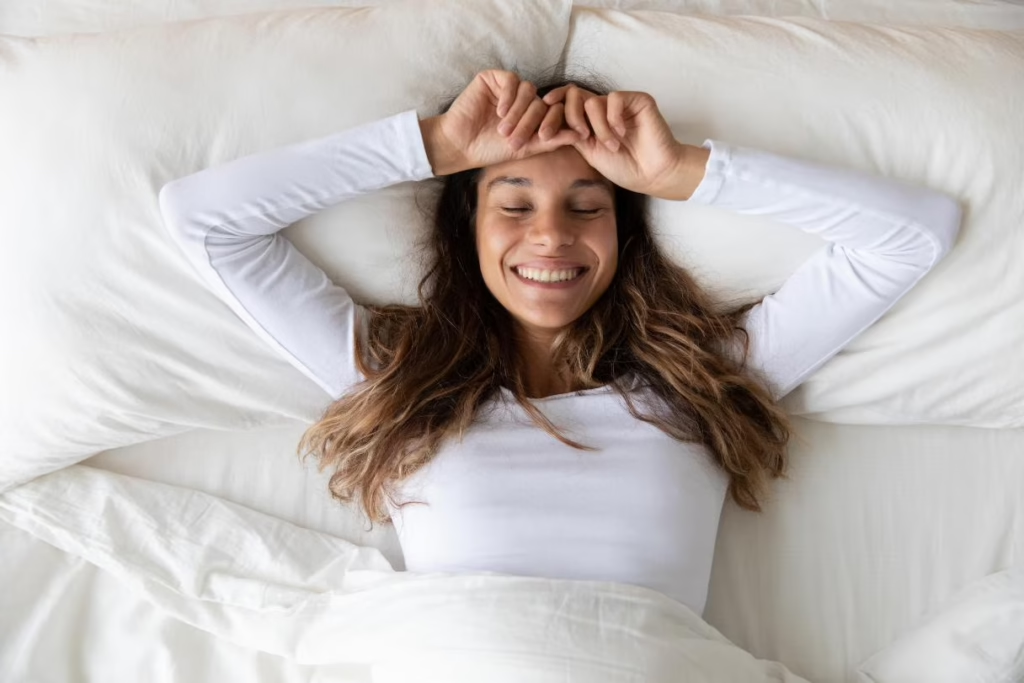
The Methodology of Sleep Study Ipswich
The research team employed various techniques to collect accurate and reliable information on sleep habits, sleep quality, and potential sleep disorders prevalent in the region.
The Role of Sleep Studies in Health Research
Sleep studies play a vital role in health research, as they allow researchers to examine sleep patterns objectively. Through polysomnography, a diagnostic test used in sleep studies, researchers can monitor brain waves, breathing patterns, heart rate, and other physiological parameters during sleep. This data enables a comprehensive analysis of sleep patterns and helps identify any abnormalities or disorders that may exist. Learn more about heart rate, click here.
How Sleep Studies are Conducted
In the sleep study in Ipswich, participants were required to spend a night in a specially equipped sleep laboratory. During their stay, their sleep was monitored using advanced polysomnography equipment. Additionally, participants were required to provide detailed information about their sleep routines, lifestyle habits, and any sleep-related symptoms they may have experienced. This multi-faceted approach ensured that the sleep study captured a comprehensive picture of sleep patterns in the Ipswich region.
The sleep laboratory in Ipswich was designed to create a comfortable and relaxing environment for participants. The rooms were soundproofed to minimize external disturbances, and the bedding was carefully selected to provide optimal comfort. Soft lighting and soothing decor were used to promote a sense of tranquility, facilitating a more natural sleep experience for the participants. Learn more about Sleep Study Referral: Understanding the Process and Requirements visit at https://mhsblogs.com/sleep-study-referral-understanding-the-process-and-requirements/.
Furthermore, the research team in Ipswich included experienced sleep specialists who oversaw the entire study process. These experts were trained to analyze the data collected during the sleep study accurately. Their expertise allowed for the identification of subtle patterns in sleep behavior and the interpretation of complex sleep data, ensuring that the results of the study were thorough and insightful.
Analysing Sleep Patterns in Queensland
The analysis of sleep patterns in Queensland revealed several interesting findings. These findings not only provide valuable insights into the sleep habits of the region but also shed light on the prevalence of sleep disorders and the impact of lifestyle choices on sleep quality.
Understanding the nuances of sleep patterns is crucial for maintaining overall health and well-being. By delving into the sleep habits of Queensland residents, researchers were able to uncover valuable information that can help individuals make informed decisions about their sleep hygiene and seek appropriate interventions when needed.
Common Sleep Disorders in Queensland
One of the key findings from the sleep study in Ipswich was the high prevalence of sleep disorders in Queensland. Sleep apnea, insomnia, and restless leg syndrome were identified as the most common sleep disorders in the region. These disorders can significantly disrupt sleep continuity and quality, leading to daytime sleepiness and impaired daytime functioning.
It is essential for healthcare providers to be aware of the prevalence of these sleep disorders in Queensland to ensure timely diagnosis and management. By addressing these issues effectively, individuals can improve their overall quality of life and reduce the risk of associated health complications.
Impact of Lifestyle on Sleep Patterns
Another fascinating finding from the sleep study highlighted the impact of lifestyle on sleep patterns. It was observed that individuals who engaged in regular physical activity, maintained a healthy diet, and practiced effective stress management techniques experienced better sleep quality. On the other hand, those with sedentary lifestyles, poor dietary habits, and high stress levels had a higher prevalence of sleep disturbances.
These findings underscore the importance of adopting a healthy lifestyle to promote restful sleep. By incorporating physical activity, nutritious eating habits, and stress-reducing activities into daily routines, individuals can optimize their sleep patterns and enhance their overall well-being. Making conscious choices to prioritize sleep can have a profound impact on both physical and mental health, ultimately leading to a more fulfilling and energized life.

Findings from Sleep Study Ipswich
The findings from the sleep study in Ipswich provided invaluable insights into various aspects of sleep patterns, which have important implications for public health and well-being.
Understanding the nuances of sleep patterns is crucial for identifying potential areas of improvement in sleep hygiene and overall health. The study delved deep into the sleep habits of individuals in Ipswich, shedding light on both quantitative and qualitative aspects of their rest. By examining factors such as bedtime routines, sleep environment, and sleep disturbances, researchers were able to paint a comprehensive picture of the sleep landscape in the region.
Key Insights into Sleep Patterns
One significant insight gained from the study was the average sleep duration of individuals in the Ipswich region. It was found that the majority of participants were not meeting the recommended sleep duration, which contributes to the overall sleep debt in the population. Additionally, the study revealed that the sleep efficiency, a measure of the time spent asleep while in bed, was significantly lower than expected, indicating possible disturbances in sleep quality.
Furthermore, the study also explored the impact of lifestyle factors such as screen time before bed, caffeine consumption, and stress levels on sleep patterns. These additional layers of analysis provided a more holistic view of the factors influencing sleep quality and duration among Ipswich residents, offering valuable insights for future interventions and support programs.
Implications of the Study for Public Health
The implications of the sleep study in Ipswich for public health are far-reaching. The findings highlight the urgent need for sleep health education and awareness campaigns in Queensland. By promoting the importance of a good night’s sleep and providing evidence-based strategies to improve sleep habits, public health initiatives can positively influence the overall well-being and productivity of individuals in the region.
Moreover, the data from the study can serve as a foundation for policy development aimed at creating sleep-friendly environments in workplaces, schools, and communities. By prioritizing sleep as a fundamental pillar of health, policymakers can work towards implementing systemic changes that support healthy sleep habits and address the root causes of inadequate rest. Collaborative efforts between health authorities, educational institutions, and local businesses can help create a culture that values and prioritizes sleep, ultimately leading to a healthier and more vibrant population in Ipswich and beyond.
Improving Sleep Health in Queensland
Based on the findings from the sleep study, it is evident that efforts need to be made to improve sleep health in Queensland. Implementing …
Read MoreSleep Study Referral: Understanding the Process and Requirements
In today’s fast-paced world, getting a good night’s sleep has become increasingly difficult for many individuals. From hectic work schedules to the constant distractions of technology, it’s no wonder that sleep disorders are on the rise. If you’re experiencing persistent sleep issues, your healthcare provider may recommend a sleep study to further investigate the cause of your sleep problems. Understanding the process and requirements of a sleep study can help you prepare and ensure a smooth experience.
Understanding Sleep Studies
What is a Sleep Study?
A sleep study, also known as polysomnography, is a non-invasive test that monitors and evaluates various aspects of your sleep. It involves spending a night at a sleep center, where trained healthcare professionals observe and record your sleep patterns, breathing, heart rate, brain activity, and other physiological parameters. The data collected during a sleep study provide valuable insights into the quality and quantity of your sleep, as well as any potential sleep disorders you may have.
Importance of Sleep Studies
Sleep studies play a crucial role in diagnosing and managing sleep disorders such as insomnia, sleep apnea, narcolepsy, and restless leg syndrome. By identifying the root cause of your sleep disturbances, healthcare professionals can develop personalized treatment plans to improve your sleep quality and overall well-being. Moreover, untreated sleep disorders can lead to serious health concerns, including cardiovascular issues, cognitive impairment, and decreased immune function. Therefore, undergoing a sleep study referral can be a pivotal step towards better health.
Types of Sleep Studies
There are different types of sleep studies that can be conducted based on the specific sleep disorder suspected. For example, a split-night sleep study involves diagnostic testing for sleep apnea during the first half of the night, followed by continuous positive airway pressure (CPAP) therapy during the second half to determine the optimal treatment. Multiple sleep latency tests (MSLT) are used to diagnose narcolepsy by measuring how quickly you fall asleep during the day. Additionally, maintenance of wakefulness tests (MWT) assess your ability to stay awake during the day, which is crucial for professions that require high levels of alertness. Learn more about Sleep Study Ipswich: Analysing Sleep Patterns in Queensland visit at https://mhsblogs.com/sleep-study-ipswich-analysing-sleep-patterns-in-queensland/
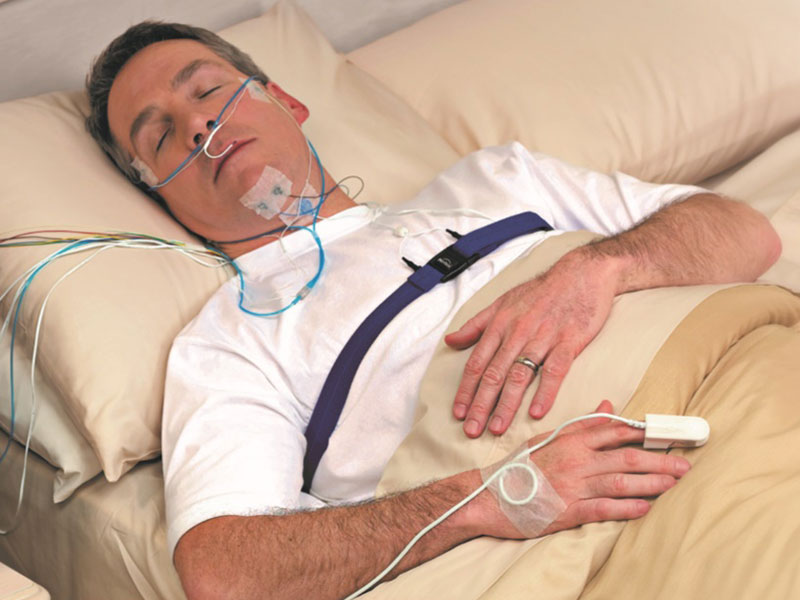
Preparing for a Sleep Study
Prior to a sleep study, it is important to follow certain guidelines to ensure accurate results. This may include avoiding caffeine and alcohol consumption, as well as certain medications that could interfere with the monitoring equipment. It is also recommended to bring comfortable sleepwear and any items that help you relax before bedtime, such as a favorite book or pillow. Creating a sleep-conducive environment at the sleep center can help you feel more at ease and mimic your typical bedtime routine for a more accurate assessment of your sleep patterns.
The Referral Process for Sleep Studies
When it comes to the referral process for sleep studies, understanding who can refer you is crucial. Sleep studies are typically recommended by a variety of healthcare professionals, including primary care physicians, pulmonologists, neurologists, or sleep medicine specialists. These specialists are trained to identify and diagnose sleep disorders, making them well-equipped to determine if a sleep study is necessary for your specific situation. Learn more about pulmonologists click here.
Who Can Refer You for a Sleep Study?
Sleep studies are typically recommended by primary care physicians, pulmonologists, neurologists, or sleep medicine specialists. If you’re experiencing persistent sleep problems, it’s important to discuss your symptoms and concerns with your healthcare provider. Based on your medical history, symptoms, and initial evaluations, they will determine whether a sleep study is necessary.
Primary care physicians are often the first point of contact for individuals experiencing sleep issues. They can conduct initial assessments, provide basic treatments, and refer you to specialists if needed. Pulmonologists specialize in respiratory conditions and can identify sleep-related breathing disorders like sleep apnea. Neurologists focus on disorders of the nervous system, including conditions that affect sleep patterns. Sleep medicine specialists have specific training in sleep disorders and can offer comprehensive evaluations and treatments.
Steps in the Referral Process
The referral process may vary depending on your healthcare provider and local practices. Generally, it involves an initial consultation where you discuss your sleep concerns, followed by a physical examination and a review of your medical history. Your healthcare provider will then assess whether you meet the criteria for a sleep study referral. If a referral is deemed appropriate, they will provide further instructions on how to proceed.
During the initial consultation, it’s important to provide detailed information about your sleep habits, symptoms, and any factors that may be affecting your sleep quality. This will help your healthcare provider make an informed decision about whether a sleep study is necessary. Additionally, be prepared to discuss any underlying medical conditions, medications you’re taking, and lifestyle factors that could impact your sleep.
Requirements for a Sleep Study Referral
Are you struggling with persistent fatigue, loud snoring, or frequent awakenings during the night? These symptoms could be indicative of an underlying sleep disorder that warrants a thorough evaluation through a sleep study. While each case is unique, there are several medical conditions and symptoms that may prompt a healthcare provider to recommend a sleep study referral.
In addition to the common symptoms like excessive daytime sleepiness and morning headaches, individuals with underlying medical conditions such as obesity, heart disease, and diabetes are at a higher risk of developing sleep disorders. The presence of conditions like sleep apnea, restless legs syndrome, or insomnia can significantly impact your overall health and quality of life. Therefore, a comprehensive sleep study evaluation is crucial in identifying and addressing these issues effectively. Learn more about common symptoms visit at https://uhs.princeton.edu/health-resources/common-illnesses.
Medical Conditions that Warrant a Sleep Study
While each case is unique, there are several medical conditions and symptoms that may warrant a sleep study referral. These include excessive daytime sleepiness, loud snoring, frequent awakenings during the night, morning headaches, gasping or choking during sleep, and witnessed pauses in breathing. Additionally, individuals with underlying medical conditions such as obesity, heart disease, and diabetes are at an increased risk of developing sleep disorders and may require a sleep study evaluation.
It’s essential to recognize the potential impact of untreated sleep disorders on your overall health and well-being. By addressing these issues proactively, you can improve your sleep quality, enhance your daytime functioning, and reduce the risk of associated health complications.
Necessary Documentation for a Referral
When seeking a sleep study referral, it’s important to provide your healthcare provider with accurate and detailed information. This may include a comprehensive list of your symptoms, information about your sleep habits and patterns, any previous sleep study results, and a list of current medications. By sharing this information, you can assist your healthcare provider in making an informed decision regarding your sleep study referral.
Remember, a sleep study is a valuable tool in diagnosing and managing various sleep disorders. By collaborating with your healthcare team and actively participating in the evaluation process, you can take proactive steps towards improving your sleep quality and overall health.
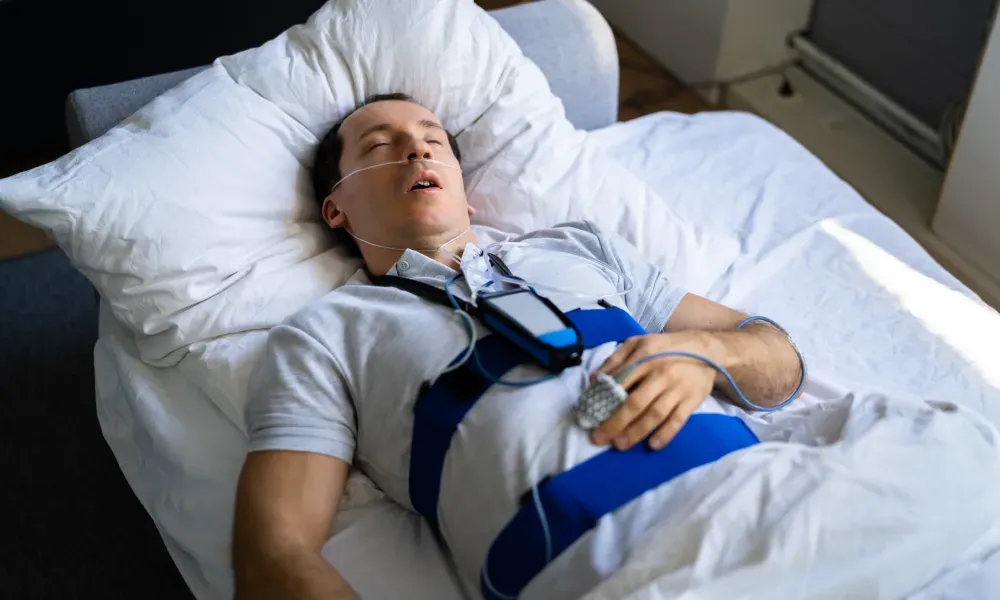
Preparing for Your Sleep Study
Embarking on a sleep study can be a new and somewhat daunting experience for many individuals. However, understanding what lies ahead can help ease any apprehensions you may have. Upon your arrival at the sleep center, you will be ushered into a cozy room meticulously designed for sleep studies. The array of monitoring equipment, though extensive, is completely painless and non-intrusive. Tiny sensors will be affixed to different parts of your body to monitor a range of vital signs including brain waves, eye movements, breathing patterns, heart rate, and muscle activity. Despite the initial strangeness of being hooked up to these devices, sleep centers take great care to cultivate a serene and homelike ambiance to ensure you have a restful and comfortable sleep environment.
What to Expect During the Study
Throughout the night, trained professionals will discreetly monitor your sleep patterns and vital signs from a separate control room. They will observe your responses to various sleep stages and disturbances, all while ensuring your safety and well-being. The data collected during the study will provide valuable insights into your sleep quality and any underlying sleep disorders that may be affecting your rest. By participating in a sleep study, you are taking a proactive step towards understanding and improving your sleep health.
Tips for the Night Before Your Study
To ensure the accuracy and effectiveness of your sleep study, it is crucial to adhere to the specific guidelines outlined by the sleep center. These guidelines typically include refraining from the consumption of caffeine or alcohol a few hours before the study, avoiding excessive daytime napping, and sticking to your usual bedtime routine. Additionally, consider bringing along your favorite sleepwear, personal toiletries, and any items that contribute to your sleep comfort, such as a beloved pillow or soothing sleep mask. By following these recommendations, you can optimize the conditions for a successful and informative sleep study experience.
Interpreting Sleep Study Results
Understanding
… Read MoreGuide on How to Set Up Your CPAP Pressure Correctly
In order to give the most recent valid information, Air Liquide Healthcare routinely compares the information included within our pages to that found in the most recent scientific publications and most highly recommended websites, and other resources.
Those who suffer from obstructive sleep apnea (OSA) have difficulty breathing for brief periods while they sleep as a result of their airways being obstructed or collapsing. After a sleep apnea test, doctors will often recommend using CPAP Masks to treat the issue. The gadgets assist normalise breathing by delivering pressured air. Too little or too much pressure can have unfavorable consequences on CPAP therapy, so getting it just right is essential.

We’ll go over the several variables that go into establishing a comfortable CPAP pressure level. We’ll point out warning indicators that should prompt you to visit your doctor and request a blood pressure adjustment. Only a medical specialist should adjust the pressure settings.
Adjusting Your CPAP’s Pressure
A CPAP Machine’s output pressure is expressed in centimeters of water pressure (cm H2O). Device-specific, the typical pressure range for CPAP devices is between 4 and 20 cm H2O. Though uncommon, there are devices that can pump up to 30 cm H2O. People with OSA typically have a pressure setting1 of around 10 cm H2O.
The most typical approach to settling on a suitable pressure out from your CPAP mask is a titration study. The evaluation takes place over the course of one night, just like a sleep study would. Your oxygen levels, respiration, heart rate, brain waves, and mobility are all tracked by sensors that are strapped to your person. A doctor or sleep expert will adjust the CPAP pressure until the minimum level necessary to maintain open airways is reached.
The number of times a person stops breathing or breathes shallowly when asleep is measured by the apnea-hypopnea index (AHI), which is used to guide the adjustment of CPAP pressure by doctors. The AHI is tracked by most current CPAP devices, so you and your doctor can easily see whether your pressure needs to be adjusted.
Essential to the success of your therapy, you will be equipped for a CPAP mask during the trial. Full-face masks, nasal masks, and nasal pillows are just some of the CPAP mask options out now. After the research is complete, you and your doctor may talk about the best CPAP pressure setting for you. Depending on the findings, they may also suggest adjustments to your CPAP routine. You can also read about CPAP Machine and Sinus Infection by visiting http://mhsblogs.com/cpap-machine-and-sinus-infection/
Adjusting the Pressure on a CPAP Mask: Some Considerations
The severity of OSA and the required CPAP pressure for an individual depend on a number of factors. Some are inherent to the human body, while others are the result of behaviours like eating late at night or not getting enough shut-eye.
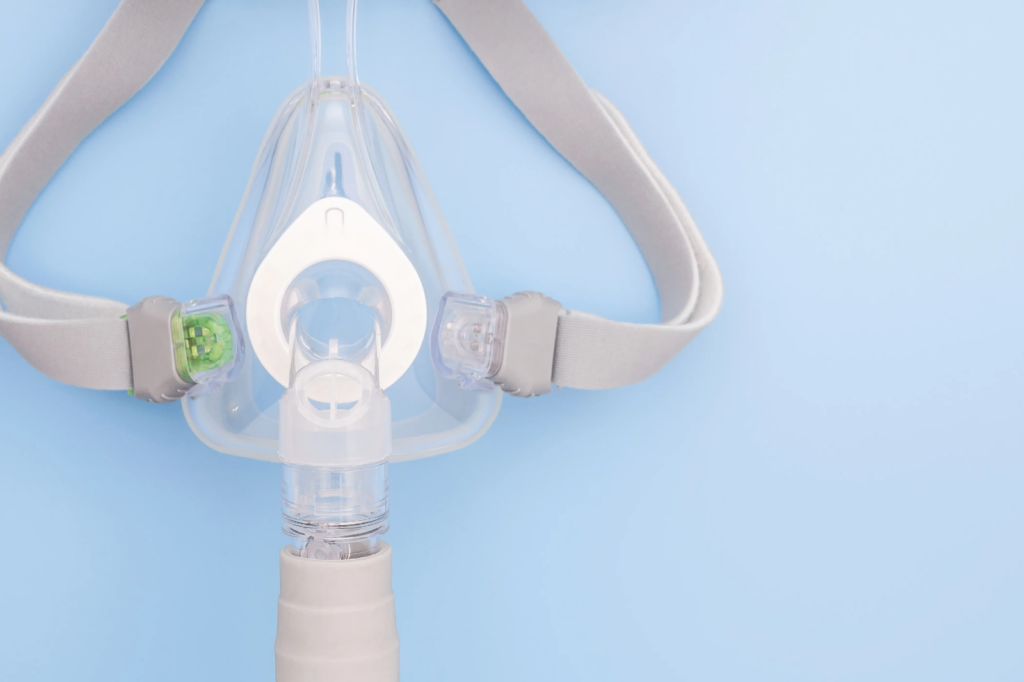
People with craniofacial or upper airway anomalies, such as a tiny lower jaw, a big tongue or tonsils, or a neck circumference of more than 17 inches, may be more susceptible to developing OSA and may require higher CPAP pressure settings. Click here to read about CPAP pressure and flow data at 2 positive pressure levels and multiple controlled breathing rates from a trial of 30 adults.
A deviated septum restricts nasal airflow, which may need a greater amount of pressure to maintain an open airway in the head and neck.
Extra tissue in the neck of obese persons is associated with decreased airflow to the lungs, hence BMI is an important factor to consider. When a person loses a large amount of weight, they often need to reduce their pressure setting because pressure needs tend to grow with a person’s weight.
Nasal allergies: Allergies and nasal congestion may impede breathing, leading to lower oxygen levels. A CPAP Mask equipped with a humidifier may be useful for those with allergies, in addition to the pressure settings calibration. Filters may also be kept free of allergens by being cleaned regularly.
Sleeping on one’s back is thought to be the worst posture for sleep apnea6 because the body’s weight presses down on the trachea and esophagus. As a result, those who sleep on their backs typically need greater pressure settings. Because it relieves pressure on the upper airways, side sleeping7 is recommended for persons with OSA.
Adjusting CPAP Mask pressure and its advantages
Conditions related to sleep apnea, such as snoring and sleep disruptions, can be alleviated with the right CPAP pressure settings. Your doctor may recommend a change in your CPAP pressure settings if you find that you are still having trouble sleeping while using the device. Here are some warning signals of low or high blood pressure:
Too Little Pressure: If you use a CPAP Mask but still feel tired or unrefreshed in the morning, your airways may not be getting enough oxygen. When your CPAP pressure is too low, you may have side effects like as heavy snoring, a choking sensation, or no reduction in hypertension. However, if your AHI does not start decreasing once you have included CPAP therapy in your regular sleep regimen, it may be time to try a different setting.
Too much pressure coming from your CPAP Mask. When you start to feel uncomfortable, you know the pressure is too much. Symptoms of high pressure include difficulty breathing, dryness of the mouth and nose, and a burning sensation in the throat. Others have issues with mask leaks, fluid in the ears, and wind or belching after ingesting air.
Masks that Use the APAP Algorithm
Your doctor may recommend an automated positive airway pressure (APAP) machine if you continue to struggle with the pressure settings on your current equipment. The user’s breathing patterns are detected and used to regulate the device’s pressure. A patient’s respiration and airway resistance are monitored and the Mask’s intensity is adjusted accordingly.
A doctor will still need to recommend a specific pressure range that works best for you, despite the fact that APAP Masks can regulate the pressure on their own. Some unwanted consequences may manifest themselves if the range is incorrect.
… Read MoreRecent Posts
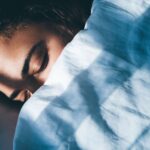 Discovering Your Sleep Type: The Benefits of a Sleep Type TestDo you often find yourself tossing and turning at night, struggling to fall asleep? Or maybe you drift off to dreamland effortlessly but still wake up feeling groggy and exhausted. If either of these scenarios sounds familiar, it's possible that you […]
Discovering Your Sleep Type: The Benefits of a Sleep Type TestDo you often find yourself tossing and turning at night, struggling to fall asleep? Or maybe you drift off to dreamland effortlessly but still wake up feeling groggy and exhausted. If either of these scenarios sounds familiar, it's possible that you […]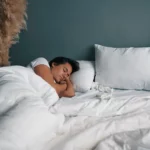 Sleep Apnea Testing in Brisbane: Your Complete GuideSleep apnea is a common sleep disorder that affects many people in Brisbane and around the world. If left untreated, it can lead to serious health complications. In this complete guide, we will explore everything you need to know about sleep apnea […]
Sleep Apnea Testing in Brisbane: Your Complete GuideSleep apnea is a common sleep disorder that affects many people in Brisbane and around the world. If left untreated, it can lead to serious health complications. In this complete guide, we will explore everything you need to know about sleep apnea […] Sleep Study Ipswich: Analysing Sleep Patterns in QueenslandSleep is a fundamental aspect of our daily lives, yet it is often overlooked and undervalued. In recent years, sleep disorders have been on the rise, leading to a growing concern for public health. To shed light on this issue, a comprehensive sleep study […]
Sleep Study Ipswich: Analysing Sleep Patterns in QueenslandSleep is a fundamental aspect of our daily lives, yet it is often overlooked and undervalued. In recent years, sleep disorders have been on the rise, leading to a growing concern for public health. To shed light on this issue, a comprehensive sleep study […] Sleep Study Referral: Understanding the Process and RequirementsIn today's fast-paced world, getting a good night's sleep has become increasingly difficult for many individuals. From hectic work schedules to the constant distractions of technology, it's no wonder that sleep disorders are on the rise. If you're […]
Sleep Study Referral: Understanding the Process and RequirementsIn today's fast-paced world, getting a good night's sleep has become increasingly difficult for many individuals. From hectic work schedules to the constant distractions of technology, it's no wonder that sleep disorders are on the rise. If you're […]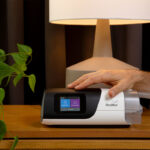 ResMed AirMini vs Traditional CPAP Machines: A Comparative AnalysisIn the world of sleep apnea treatment, Continuous Positive Airway Pressure (CPAP) therapy has proven to be highly effective in improving the quality of sleep for patients. CPAP machines work by providing a constant flow of air to keep the airways open […]
ResMed AirMini vs Traditional CPAP Machines: A Comparative AnalysisIn the world of sleep apnea treatment, Continuous Positive Airway Pressure (CPAP) therapy has proven to be highly effective in improving the quality of sleep for patients. CPAP machines work by providing a constant flow of air to keep the airways open […]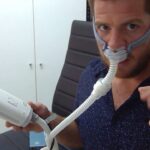 Tips for Optimizing Your Experience with the ResMed AirMiniThe ResMed AirMini is a compact and convenient device that offers a host of features to enhance your sleep experience. Whether you are new to using this device or looking for ways to improve your current setup, this article will provide you with valuable […]
Tips for Optimizing Your Experience with the ResMed AirMiniThe ResMed AirMini is a compact and convenient device that offers a host of features to enhance your sleep experience. Whether you are new to using this device or looking for ways to improve your current setup, this article will provide you with valuable […] Eye Surgery, LASIK vs Contact Lenses: Which One Should You Choose?Eye surgery, LASIK, or laser vision correction. The procedure goes by many names, but regardless of what you call it, LASIK surgery is one of the most popular permanent options for those with poor vision. But while laser eye surgery works for various […]
Eye Surgery, LASIK vs Contact Lenses: Which One Should You Choose?Eye surgery, LASIK, or laser vision correction. The procedure goes by many names, but regardless of what you call it, LASIK surgery is one of the most popular permanent options for those with poor vision. But while laser eye surgery works for various […]![Is Laser Eye Surgery Worth the Cost? [Complete Guide]](https://mhsblogs.com/wp-content/uploads/2023/05/LASIK-SMILE-and-PRK2-150x150.jpg) Is Laser Eye Surgery Worth the Cost? [Complete Guide]You may be considering going for laser eye surgery soon. The entire laser eye surgery procedure is quick and painless and eliminates the need for glasses or contact lenses for a very long time. However, laser vision correction can also be expensive. […]
Is Laser Eye Surgery Worth the Cost? [Complete Guide]You may be considering going for laser eye surgery soon. The entire laser eye surgery procedure is quick and painless and eliminates the need for glasses or contact lenses for a very long time. However, laser vision correction can also be expensive. […] Looking to use your CPAP machine during winterUsing a CPAP (Continuous Positive Airway Pressure) device is an effective treatment for obstructive sleep apnea. Depending on the time of year and where you are located, you may need to adjust your CPAP treatment accordingly. For example, more humidity […]
Looking to use your CPAP machine during winterUsing a CPAP (Continuous Positive Airway Pressure) device is an effective treatment for obstructive sleep apnea. Depending on the time of year and where you are located, you may need to adjust your CPAP treatment accordingly. For example, more humidity […]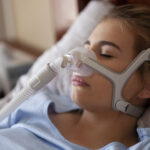 Travel easily with your CPAP machines with these tipsYou must bring your CPAP machines, which is a device often used to treat sleep apnea, everywhere you travel if you need it. Fortunately, traveling with CPAP machines need not be difficult, though some models make it easier than others. Many individuals […]
Travel easily with your CPAP machines with these tipsYou must bring your CPAP machines, which is a device often used to treat sleep apnea, everywhere you travel if you need it. Fortunately, traveling with CPAP machines need not be difficult, though some models make it easier than others. Many individuals […]

